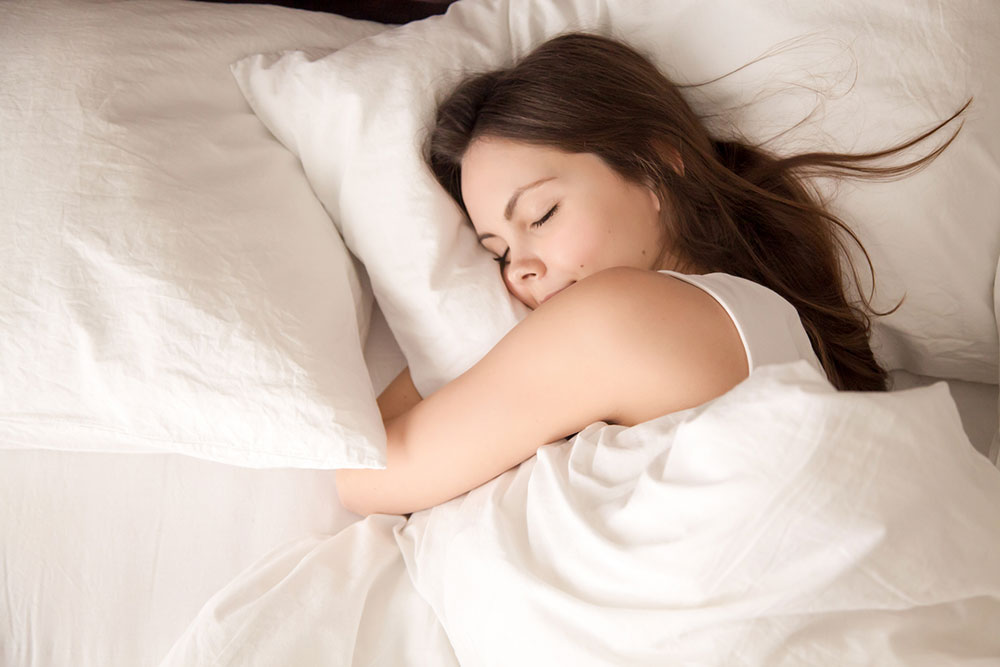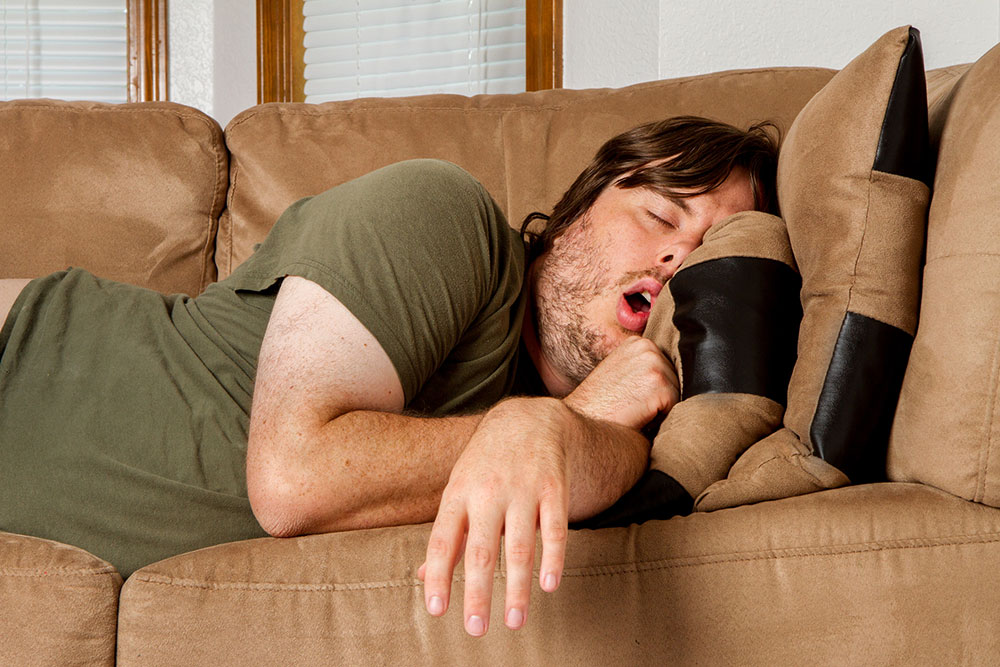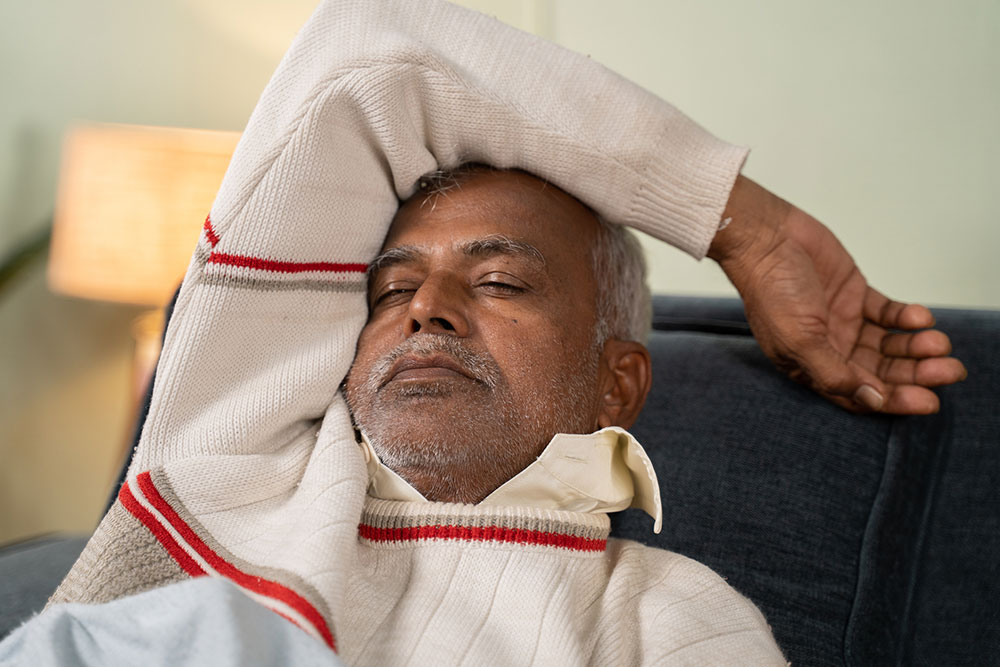Need a reset? Take an afternoon snooze! But how long should a nap be? Here, we’ve broken down the essential things you need to know about napping so you can avoid feeling groggy.
View in gallery
There are very few things greater than waking up feeling refreshed and ready after a good nap in the afternoon. But what makes it a “good” nap? And can daytime napping be bad?
The first essential thing you have to know about napping is that timing is everything! When taken too long or too short, a nap can make you feel too groggy and fatigued instead of leaving you rejuvenated. To experience the restorative benefits of napping, you can precisely time your shuteye.
So, without further ado, here’s a healthy dose of napping know-hows to answers to all your questions about the best way of catching midday z’s.
Sleeping vs. Napping – Is There a Difference?
We’ve all been there. You plan to take a couple of minutes of shuteye that quickly turns into hours long of dozing. And that right there is the fine line between napping and sleeping – the timing!
Naps are usually short and are only meant to give you a temporary recharge. Meanwhile, you take a couple of hours to sleep, which should give you a complete reset.
And besides the duration, the two also differ in sleep cycles. Four stages of sleep happen sequentially. It starts from (1) transitioning from wakefulness to sleep or the dozing off stage, (2) light sleep, (3) deep sleep, and (4) REM sleep.
Since the main goal of a nap is to rejuvenate and re-energize your mind and body temporarily, it doesn’t enter the deep sleep or the REM stage. Meanwhile, true and complete sleep occurs when you reach the deep sleep and REM stages. During these last two stages, your body feels the most impactful restoration.
Is Napping Good for You? Should You Nap?
View in gallery
Ever wonder if you should include napping in your daily schedule?
As it turns out, many people would enjoy a midday nap and even reap some great benefits from good mid-day sleep bouts. And naps aren’t just for children!
Sleep experts have shared that taking a little nap during the day can go a long way for both your mind and body. In fact, the authors of a 2019 study noted that plenty of research over the years had found strong evidence of the health benefits of napping.
So, what exactly do you get from a good midday snooze session?
Increased Alertness
According to some studies, people taking mid-afternoon naps wake up feeling an energy boost similar to what they experience after drinking coffee or a caffeinated energy drink. But unlike the rejuvenating effects from caffeine, taking a nap benefits the entire body. Meaning you increase alertness after a good nap, and you also increase your memory recall.
Reduced Stress
It goes without saying that lack of proper sleep will leave you feeling tired and restless. And one of the common reasons for lack of sleep in many people is constant stress and tension. By squeezing in a good nap time midday, you can effectively minimize your stress levels.
Eventually, a nap will not only make you feel less stressed out during the day but help you balance out your stress levels, so you have a healthy sleep with fewer sleep troubles during the night.
Sharper Cognitive Skills
There’s a good reason why you feel groggy and mentally exhausted before going into a nap then waking up feeling sharper and focused. The best thing about napping is it boosts your overall cognitive skills.
In fact, Sleep Foundation quoted a study conducted at NASA that found that military pilots and astronauts experienced a 34% improved overall performance after a nap. And they got a 100% boost in alertness after napping too!
You don’t have to be a military pilot or an astronaut for that. You get the moral lesson – napping can improve your cognitive function.
Better Mood
Not only does a nap makes you more alert and refreshed afterward, but it also puts you in an improved mood. After all, tiredness usually comes with irritability. So, if you spend several minutes recharging, you reduce your stress and effectively turn your mood around. It’s better for you and everyone around you!
Potential Cons of Napping
View in gallery
Like everything else, too much or too little is never good for you. The same goes for napping. As we’ve previously pointed out – timing is everything when it comes to taking naps.
If there are plenty of benefits you can get from a midday snooze, there are also disadvantages, especially when not done right. So, while some people find advantages from napping, others find it counterproductive.
Some cons of napping to mull over:
- Interferes with the ability to fall or stay asleep at bedtime. Napping during the day can be a problem for people with insomnia or those who are having consistent trouble falling and staying asleep at night.
- Sleep inertia. Grogginess after waking from a nap or sleep inertia can be disruptive if you need to get right back to work after your midday snooze. But you can typically avoid it by taking shorter naps.
Best Nap Length for Adults
The thing is – a nap is not just a nap and not all naps are the same! In fact, there are different kinds of naps that provide you with different benefits. So, choosing a “good” nap essentially depends on what you aim for from your midday snooze.
As per the National Sleep Foundation, naps can be characterized in two, depending on the nap lengths or duration.
But to understand the best nap lengths for adults, let’s take a closer look at the different sleep stages to later see how waking up at certain stages during a nap will affect you.
| Sleep Stages | Type of Sleep | Other Names | Normal Duration |
| Stage 1 | NREM | N1 (dozing off) | 1-5 minutes |
| Stage 2 | NREM | N2 (Light Sleep) | 10-60 minutes (20-minute average cycle length) |
| Stage 3 | NREM | N3, Delta Sleep, Deep Sleep | 20-40 minutes |
| Stage 4 | REM | REM sleep | 10-60 minutes (or 90 minutes after sleeping) |
Another thing to understand is the sequence of sleep stages. A fully uninterrupted sleep will go through the four stages of sleep as follows:
- Sleep starts with Stage 1.
- Stage 1 sleep is followed by Stage 2.
- Stage 2 progressive to Stage 3.
- Stage 2 sleep is repeated.
- You enter REM sleep.
After the first REM stage, your body usually returns to the non-REM sleep Stage 2 before progressing to Stage 3, and the cycle continues. Usually, the cycle repeats around four to five times in total during a good night’s rest, with each NREM stage getting shorter while the REM duration is getting longer.
And with all of that said, let’s take a look at the best nap times!
Best Nap Length Overall 😸 – 10-20 Minute Power Nap
View in gallery
Power naps aka cat naps are periods of light rest lasting 10 to 20 minutes. They are essentially short naps you can take during the day that allows you to wake up feeling more alert, energized, and refreshed.
A perfectly timed power nap means you enter light sleep or Stage 2 of the sleep cycle but wake up before Stage 3. It means that you’ll wake up from a power nap ready to get back to your work or the day, not experiencing sleep inertia at all. It is because a 10–20-minute nap doesn’t yet reach the deeper stages of the sleep cycle.
Ten to 20 minutes of napping is arguably the most effective nap length as it will help you perk up, ready to continue the day, with little to no grogginess. And since it’s a very short nap, power naps are not likely to interfere with your sleeping routine during the night.
Most Ideal Nap Duration ☺️ – 90-Minute Naps
View in gallery
If you can afford the time to take longer naps, then take 90-minute naps. It’s referred to as the ideal nap length because it allows you to sleep through a full cycle of all sleep stages. And since you’re waking up after REM sleep and not the deep sleep stage, you avoid sleep inertia.
Waking up after REM also provides plenty of benefits like a cleared mind, better procedural and emotional memory, and a boost in creativity. And since it’s a whole sleep cycle, a 90-minute longer nap can help you recover the lost sleep from the previous night!
Average Nap Time 😑 – 60-Minute Naps
View in gallery
A 60-minute nap has a few benefits but also downsides. This nap length includes the deepest stage of sleep or slow-wave sleep, but it is not a full sleep cycle. Meaning you’ll be waking up feeling tired and groggy, at least for the first 15 minutes.
And in terms of benefits, taking an hour-long nap can improve cognitive memory processing. Entering deep sleep helps when it comes to memory. So, if you need to remember facts, faces, and places, you can take a 60-minute nap.
Worst Nap Duration 🥴 – 30-Minute Naps
View in gallery
If you’re planning to add napping to your midday routine, it’s best to avoid taking 30-minute naps. You don’t really get anything from it. And waking up after a half-hour nap usually just makes you feel a bit groggy. It’s what you call sleep inertia, which can usually last for 30 minutes after waking up.
Sleep inertia happens because your body has already entered deeper sleep. And if your body is forced to wake up in the middle of deep sleep or just as you enter the deep sleep stage, it doesn’t quite know what to do after. So, if you plan to be productive after a nap, a 30-minute nap wouldn’t be a great nap length for you.
When Is the Best Time for Napping?
Besides planning your ideal nap length, it’s also important to consider the optimal times for napping. You don’t want to take your daytime naps too late in the afternoon, or you’re likely to have trouble falling asleep once you’re lying on your mattress, ready for bed at night.
So, what is the best time to nap? The ideal time to nap depends on your sleep schedule, really.
Those who call themselves morning persons usually sleep through the night, wake up early in the morning, and usually experience a dip in energy early in the afternoon. So, if you typically experience a post-lunch dip or an afternoon slump, taking your nap during these times will help counteract that loss of energy and performance.
But if you experience sleep deprivation because of an unusual sleep schedule, choosing a different nap time could be best. For instance, the ideal nap time for shift workers would be prior to taking their night shift or in their free time during a night shift.
Ready for a Nap? Napping Tips to Fall Asleep Fast During the Day
View in gallery
Mastering the art of napping is not easy. It takes a bit of know-how and plenty of practice. But with all the benefits of a good nap, it’s worth it adding to your daily routine.
And these napping tups can help you optimize your nap time!
- Find an ideal place to nap. Somewhere cool, dark, and quiet will help you make the most of your short nap time without interruptions.
- Get comfortable. You might have a hard time falling asleep if you’re not comfortable. So, consider using a weighted blanket or practicing techniques like using essential oils to help you sleep.
- Set the alarm. This tip is particularly useful if you’re not used to napping during the day. Setting the alarm clock will ensure that you stay within your ideal nap length. But don’t forget to consider the amount of time for you to fall asleep when setting your alarm.
- Take your naps during the early afternoon. As a universal rule, try to avoid napping after three in the afternoon, especially if you take long naps. Otherwise, it can mess with your nighttime quality sleep schedule.
- Stick to your napping routine. According to some research, people who take naps habitually have better nighttime sleep. In that case, it could be a good sleep medicine!
Final Thoughts – How Long Should I Nap?
Now that you know the many reasons why napping is a friend (not a foe!) and how long you should nap and during what time, it’s time to slip on your sleeping mask and doze off!
Of course, taking an afternoon nap doesn’t come easy for everyone. And it’s also worth noting that napping during the day is not an answer if you are sleep-deprived. It cannot replace your regular nighttime sleep needs. It’s still important to get a complete good night’s sleep to wake up refreshed and energized in the morning.
But if you are looking for a quick midday pick-me-up without caffeine, taking a 10–20-minute nap is the best way to go. So, happy napping!



